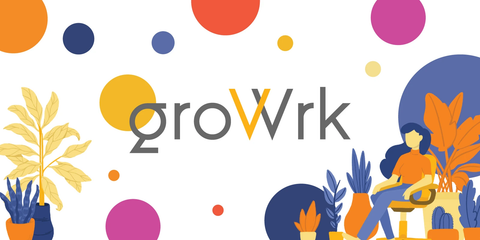Virtual Teams Challenges: Guide to Know How to Overcome
Almost two years of global seem to have flashed by in an instant. Millions of people have experienced the benefits of while also struggling through the many .
If you are new to or looking to improve your virtual team cohesion this article will help you identify potential challenges in your virtual team.
You can also find the tactics to solve them based on the experience of successful distributed companies.

One of the biggest is making the complete switch to a remote-first mindset. Regardless of where your is located or when they are working, everything has to be conducted as if everyone was remote.
Despite not adopting this mindset, many companies have still seen gains in productivity and -life balance while working remotely. But they will continue to face various obstacles like burnout until they make a complete transition.
To overcome these challenges, you need to fundamentally restructure how is conducted and thought about in your organization. Studying how globally distributed companies like Klarna or remote-first companies like Gitlab manage their virtual teams is the best place to start.
Here are the problems they faced and how they overcame them.
Cross-cultural
One of the many challenges that a diverse will face is cultural differences. It is no secret that people are different from around the world. Their personalities and working styles are influenced by their cultures as much as their upbringing. Inevitably there will be some miscommunications that, if left unaddressed, will lead to conflict. A shouldn’t bring your down.
If someone speaks in a language that isn’t their own, they might not be as willing to express their emotions or voice criticism. You need to encourage all members to find their voice regardless of their language level, so no vital information goes unsaid.
Solution: Teach Cultural Education
With such cultural diversity on a virtual or globally , you will inevitably run into some misunderstandings.
People around the world have different working expectations and styles. So, one way is to address these differences before a conflict can happen is to address any preconceptions or stereotypes that you or other members may have.
One way to do this is to think of a country and write down everything that comes to mind. Next, highlight all the items that are based on personal experience and could be considered stereotypes.
When making presentations, native speakers will also want to slow down so that everyone can understand and be aware of body language in 1:1s or meetings.
One of the best investments you can make if you have an international is cultural sensitivity or diversity training.
Diversity Training at Accenture is made of 3 different categories:
- Diversity Awareness
- Diversity Management
- Professional development

Solution: Foster
Encouraging is a straightforward solution where you want to encourage members to together virtually whenever possible. Fostering helps people to understand their teammates and their working styles on a personal level. It also creates connections that are necessary for breaking down cultural barriers and .
Some tips include investing in like Mural that allow people to brainstorm together regardless of location. You should also encourage creativity and reward successful teamwork by doing shoutouts in slack channels when projects are completed.
Other tips include pairing people together based on their strengths and promoting a community working environment.
One example of this is how Klarna structures its teams. They do in small groups of eight people. Francine explains:
“Each focuses on a unique problem space, looking to foster a startup mentality.
Klarna still identifies people by core competencies, data, analytics, finance, marketing, tech product, etc. But every , irrespective of competence, is only eight people. And some of those teams will be cross-functional. Our product , for example, has lawyers, analysts, and developers.
Basically, a group of people who can run a small business sufficiently on their own within the organization. It's a really clever concept because it means that you're able to self-service, right? You're not relying on all these other pieces, you're actually self-sufficient to run, and that means you can run faster, quicker, and achieve desired outcomes.”
2. Time zone differences

That leads to the next , where you have to coordinate all of your processes based on where the sun rises in one location. One worker might not blink at a 7 a.m meeting, while another will barely be able to keep their eyes open.
Important projects also have to advance through each stage based on when each is available.
Lastly, everyone needs to be on the same page about global virtual projects and can’t be contacting their manager at 3 am with a question.
Solution: Asynchronous
While sprints are common among agile software development teams, a massive part of their processes is asynchronous . Each member balances having sprints and completing a portion of a project on their own time. In the end, they finish the project in increments.
Global marketing teams or international sales teams can also apply asynchronous tactics. People can complete their tasks at an even pace to avoid burning out and still meet deadlines.
In Async 3.0 at Gitlab, they define the best practices and intentional operations. One of them is having core behaviors/ asynchronously. It includes things such as brainstorming using a google doc as a whiteboard. Thought starters are written down, and feedback is always recorded.
Solution: Documentation
Documentation will be your single biggest asset when managing distributed teams. Of course, it is worth mentioning Gitlab again because they basically pioneered this technique in their remote operations.
Distributed companies should all have a single source of truth and have a “Handbook-first” mentality. This means that if a problem arises or someone has a question, they know exactly where to look and don’t have to message anyone personally.

Ways to do this are through recording meetings and constantly taking notes during conversations about projects. These notes and company handbooks can be organized and stored in Google docs or through a product like Notion.
Documentation stops blockers from constantly occurring and keeps the entire organization informed. The key is to make it a living document that distributed employees can constantly update.
3. Isolation

Isolation or feelings of loneliness is a widespread met by people new to remote working or onboarding at a new company. They cannot connect with their colleagues, or the company doesn’t offer enough opportunities to meet new people.
This “working in silos” problem can happen to any that often doesn’t communicate enough or has departments that rarely together. The result is a high turnover as people will leave to search for roles with more interactions and feelings of togetherness.
Solution: Create an inclusive remote culture
The key to creating an inclusive remote first culture is transparency.
You can make your remote organization even more transparent than a physical one by creating a company handbook with all the vital information in the cloud.
All your official procedures, company values, benchmarks, orientation and onboarding metrics, and incentives should be staples of this document.
This way, your inclusivity is set in virtual stone and can be practiced rather than just preached.
You can then hold events that exemplify each specific company value. One example of this is to hold a game night with a service like Jackbox to represent the value of “All as One.” Another way is to have new members get to know everyone by setting up quick video calls in their first week.
Other critical elements are ensuring that a calls into a from their personal computers rather than a large room. This way, a won’t feel left out, and everyone can get a word in.

Solution: Build trust and rapport within globally distributed teams
Having a with good rapport and trusting each other is more likely to succeed than a that doesn’t speak to one another.
That is because teams that understand each other are more comfortable taking risks and don’t need as much time to explain important concepts.
Parabol has some great tactics for this like:
- The first way to do this is to have your ask more personal questions in your 1:1s or kick off meetings. These are questions you would ask a friend. Like what is your favorite food, or where is your favorite place to travel?
- Another great way is to surprise members with celebratory congratulations when they are doing a good job. Other companies will send personalized notes or even gift baskets to their members.
- One thing you want to do is establish rituals in your to make your channels more friendly. Things like saying good morning and goodbye when people sign on and sign off are small steps that have huge impacts.
- Finally, a great virtual recognition ideas is to have each demo something they have been working on for the last two weeks. This lets others know how other departments are performing and become more aligned on the organization’s mission.
4. Burnout
Burnout syndrome results from chronic workplace stress that isn’t managed correctly, eventually leading to a breaking point of extreme mental exhaustion.
A Harvard study found that poor working cultures were the most common culprits for burnt-out employees across organizations. In practice, this looks like excessive , weak time management disciplines, and a tendency to give the most talented too much .

Solution: Flexible Arrangements
Although almost 40% of knowledge workers want , more than 90% want flexible working arrangements. These are the ability to set your hours and to have a healthy balance between life and .
It is a bit more challenging to have distributed across time zones, but that doesn’t mean members have to be on call 24/7.
They can set specific blocks of time where they need to collaborate and then choose the hours to get the rest of their done.
For example, the company behind WordPress, Automattic, has a popular -from-anywhere policy and gave their employees a $250 home office stipend at the start of the pandemic.
You also want to have an open conversation about mental health and overworking so that people don’t fall down that slippery slope. Offering mental health days or giving a surprise week off for burnout are all popular tactics.
Companies like Bumble and SmartRecruiters give their workers full weeks off just for burnout. A whole week to disconnect and recharge.
Solution: Time management
Here is a habit many are constantly trying to improve. The most efficient can manage their time down to the minute while also maximizing their relax and leisure time.
Companies with globally distributed teams should instill a culture where time management tactics are shared with their employees and everyone’s hours are respected.

- Set specific times in the day to spend in personal conversations with family, friends, and colleagues.
- Have a dedicated place to .
- Prioritize routines in your schedule.
- Identify and Eliminate Time-wasters
5. Trusting Your
It is somewhat obvious at this point to trust your employees. However, it still is a foreign concept for many managers adjusting to distributed (Also a reason many want to go back to the office).
They couldn’t walk over to their employee’s desks and see their progress when they wanted to and assumed the worst. The fact is if you don’t trust your to get their done, you are going to be checking up on them every hour and making the process even slower.
Solution: Empowerment
You create a more productive and equitable organization by empowering your employees to make crucial decisions and trusting them to meet deadlines.
You can find an example of this in an interview with Klarna’s Country head Francine Ereira where she says Klarna's cultural perspective encourages people to speak up and take accountability.
“Empowerment is something in our organization I find incredible. We empower everyone to deliver in a fast-paced environment.
To provide some insight of how empowering it is, I'll share a conversation my manager and I had. He told me, ‘Fran, Australia is yours to make successful,’ and I said, ‘What does successful look like?’ He said, ‘No, you tell me what successful looks like to you and then go and deliver on it because I know that's what you're capable of doing.’”
6. Ensuring Everyone Has The Tools to Remotely Efficiently

At the beginning of the pandemic, many people had to buy their home office equipment. This resulted in many virtual employees working from their kitchen tables before setting up a dedicated workspace.
Now, as more companies offer more opportunities and globally distributed companies continue to grow, making sure your has the right equipment to comfortably and securely has become a priority.
The problem is that building a remote infrastructure can turn into a logistical nightmare. Some critical challenges for HR are various shipping costs to virtual teams worldwide, different pricing for laptops depending on the country, and no place to store the devices when an employee leaves.
Some companies might need an entire department to handle the deliveries while others will elect to give their workers stipends with no nearly enough to cover everything.
On the bright side, there are other companies like Flatfile that will offer a $10,000 allowance to design the ideal home office, but that also requires a significant time investment by the worker to figure out everything on their own.
Solution: Equipment Management Software for Virtual Teams
Instead of outsourcing the distribution of equipment to or directing company departments to manage the logistics, you can use a service like GroWrk.
They have a powerful remote onboarding software that covering every step of equipping employees, such as purchases, deliveries, pickups, storage, maintenance, even software, and security. Their global distribution network allows companies to send or store equipment in more than 150 countries with real-time tracking and notifications for each device.
It is an end-to-end inventory management system for the era.
Wrapping up
As more and more companies switch to remote working or hybrid arrangements, they will continue to face the . That doesn’t mean they should hope to return to the office because employees overwhelmingly prefer .
They should take the above mentioned steps and adopt a remote-first mindset to continue succeeding in an increasingly distributed world.
Grow remote with GroWrk. We provide and manage laptops, devices, other equipment and services to remote teams in over 150 countries.

Mark Gregory
September 9


